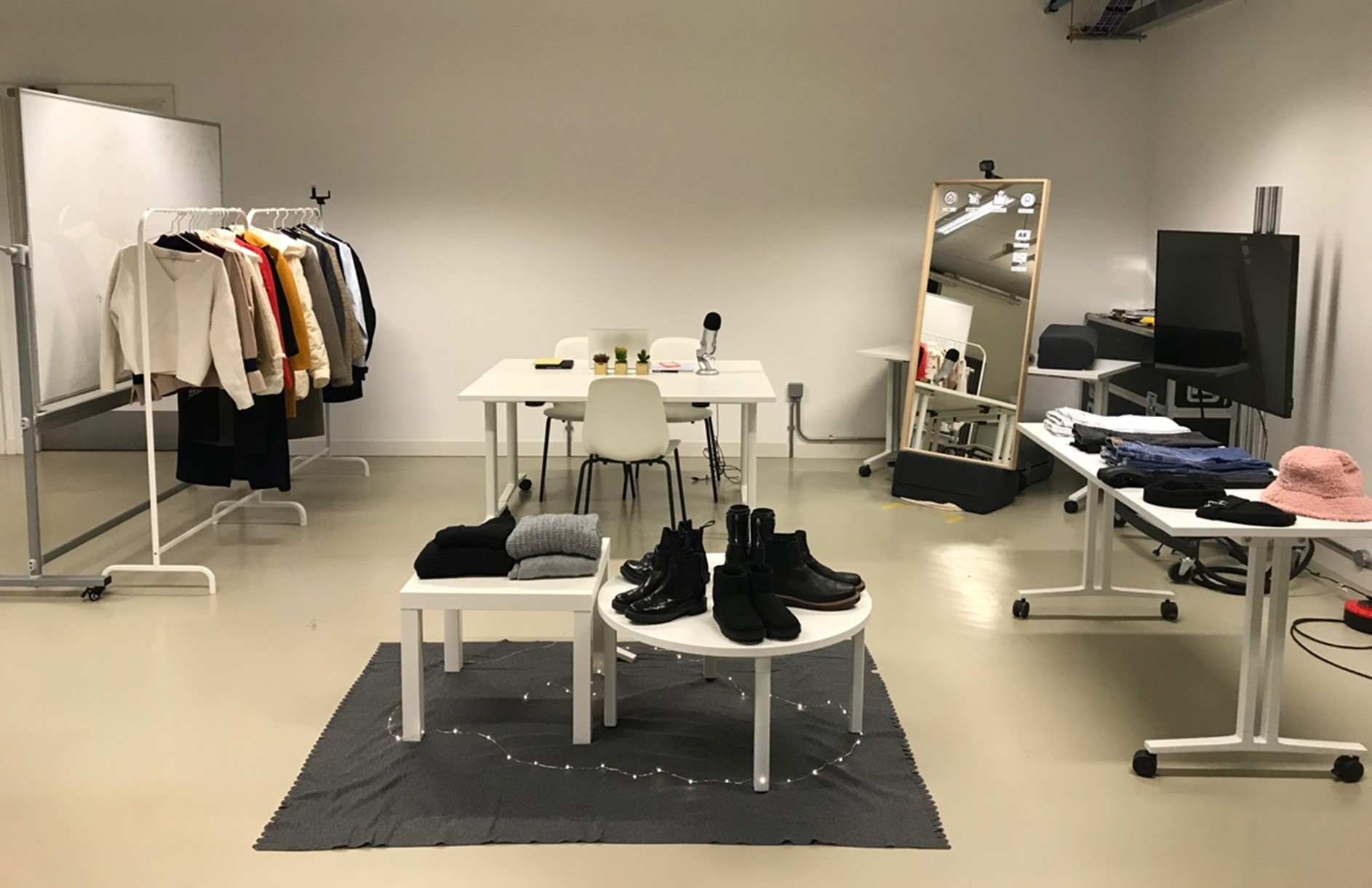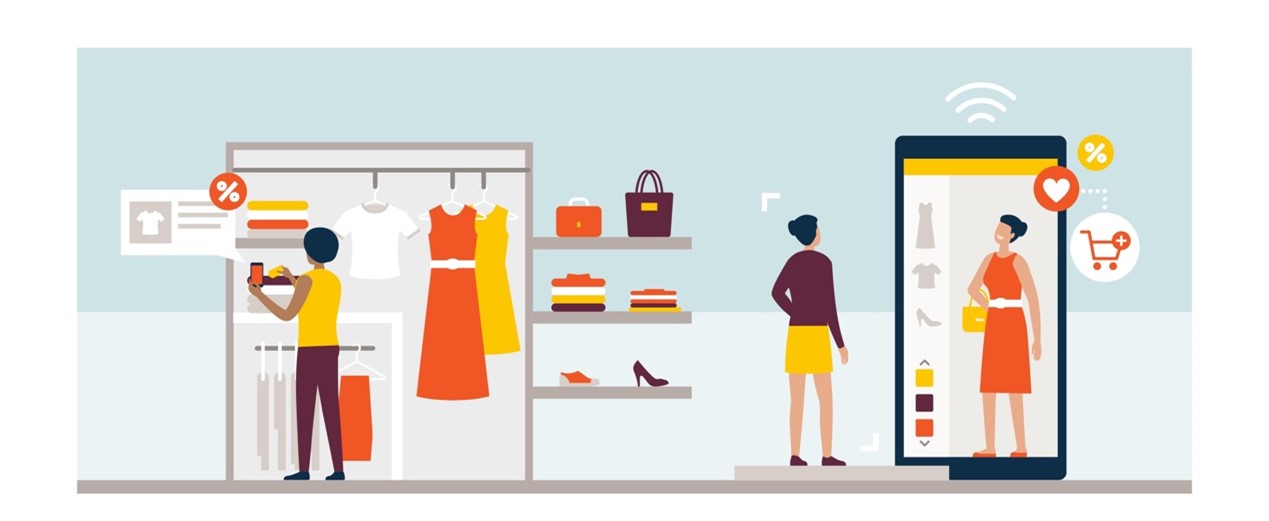Ever since the COVID pandemic, shoppers have become increasingly more comfortable with buying their clothes online rather than visiting shops.
Equally Generation Z (born since 1997) consumers have grown up in a digital world and are far more comfortable buying products at the touch of a button rather than in a physical space.
But encouraging shoppers back into stores and away from e-commerce is essential for fashion retailers who want to maintain their ‘brand value’.
A new study by researchers from Loughborough University has found that AR can offer a lifeline to such businesses.
The team tested two prototype AR shopping aides (AR Branded App and Magic Mirror) which were designed to encourage consumers to engage in physical shopping activities.
Dr Chris Parker, of Loughborough’s Design School, said: “The AR development industry faces a problem… that designers’ current approach to AR is ineffective.
“If we can design better AR apps, retailers may adopt the technology for in- store use and increase customer footfall.”
Dr Cathryn Hart, of Loughborough’s School of Business and Economics, said: “The aim of our study is to investigate consumer value of AR within high street retailers, evaluate current value (Magic Mirror and scanning items), and explore how AR can offer consumers better in-store experiences.”
The results of the study have been published in a new paper, How augmented reality can enhance fashion retail: A UX design perspective, in the journal Emerald Insight.
It sets out ten design solutions for creating in-store AR shopping applications.
|
Design Aim |
AR Solutions |
Impact |
|
Offering convenience |
|
Enhance consumer loyalty Keep existing consumer group |
|
Improving accessibility |
|
Reduce acceptance barriers Appeal new consumers |
|
Up-to-date information |
|
Increase consumer satisfaction |
|
Increase consumer satisfaction |
|
|
Improve modelling accuracy |
|
Increase purchasing intention Increase stakeholder value |
|
Improve the content richness |
|
Increase enjoyment level Increase overall profit |
|
Keep seamless shopping experience |
(e.g., there will be hangers next to the AR Mirror for customers to place the item temporarily when they pick an item to scan for product information). |
Increase consumer base Encourage consumer motivation |
|
Increase consumer satisfaction |
The study was made up of three phases:
- A series of design workshops to identify consumer behaviours
- Developing two AR prototypes (AR Branded App and Magic Mirror)
- AR Branded App video prototyping
- AR Magic Mirror video prototyping
- Experience prototype sessions in a mock-shop

The results showed that consumers have a positive attitude towards using AR when shopping.
It was also important to design AR apps that provide substantial functional benefits with enjoyment-oriented elements. This way, consumers can interact with products and receive more information.
Lastly, AR can help luxury brands tell a story from a hedonic perspective, enabling consumers to engage with the story while maintaining human interaction to ensure an elevated level of service quality.
Former Loughborough PhD student, Dr Liangchao Xue, who now works at Dyson, said: “Retailers now face the challenge of developing a high-tech element to work with the customer journey.
“Our prototypes will meet shoppers’ utilitarian needs, but also increase hedonic value when shoppers interact with the prototype.
“This advantage is especially true for magic mirror that involves more interactive elements.
“However, retailers must consider store crowding caused by queuing for the mirror, and how to coordinate the efficient use of magic mirror and the fitting room.
“Therefore, to create a compelling shopping environment, this study suggests adopting a qualitative interface rather than a quantitative interface, allowing consumers to use marginal attention to perceive information quickly, rather than reading carefully with central attention.
“For example, put images of matching suggestions in marginal spaces rather than the text of product information.
“This would help users to complete tasks through simple contextual awareness, inference of user intent and user input minimisation.”
ENDS
